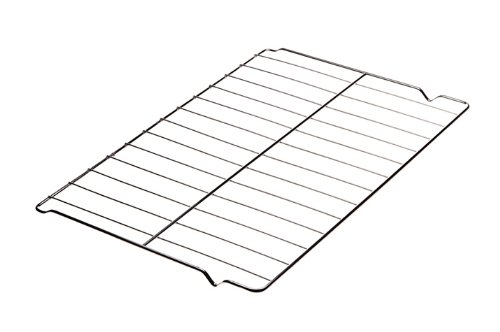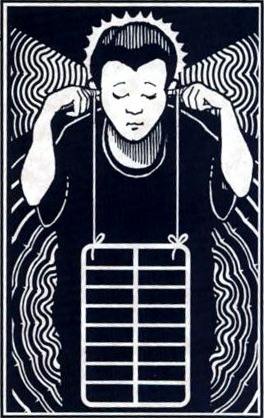
Want to enjoy a trippy concert of chimes and gongs that only you can hear? Great, because that’s what today’s post is about.
As you may have noticed if you have ever removed your oven rack for cleaning, striking it causes it to vibrate, and the vibrations create a chiming sound. But the sound is very quiet, which is why strings are necessary for this activity. The strings act as crude amplifiers plugged directly into the ears, transmitting the sound to the listener.
This activity is fascinating enough if you’re sober, but it’s ten times more effective when you’re tripping or high. It’ll only take a minute, so give it a shot!
The Method: How to Play an Oven Rack
 Take one piece of string and tie it to one corner of the oven shelf. Do the same with the other piece of string on an adjacent corner.
Take one piece of string and tie it to one corner of the oven shelf. Do the same with the other piece of string on an adjacent corner.
Take the loose ends of the string and wrap one around each of your index fingers. Then put your fingers in your ears. The oven shelf should now be hanging down front of you, as though you’re hanging a picture from your eardrums. (See the picture at left, from the bizarre but fantastic book, Museum of Lost Wonder by Jeff Hoke.)
Have a friend “play” the oven rack by striking it with a wooden spoon, a fork, or any other object you have handy. Close your eyes and listen closely. What does it sound like?
Cathedral bells, massive gongs, the music of planets swinging through their orbits — much deeper, more resonant tones than you would expect from an oven rack, right? They seem to echo forever through the chambers of your mind.
Now get creative! Try spoons, graters, whisks, and brushes. Or connect a second oven rack — a small toaster shelf or cookie rack will produce notes in a higher register. Coat hangers work too.
![]()
When I first tried this I had to improvise because no one else was around. (You can’t play the rack when your fingers are in your ears.) When my wife came home, she found me with the oven rack suspended from my head, banging it into cupboards and radiators as I stumbled around.
“What in the world are you doing?”
I figured it would be easier to demonstrate than explain. “See for yourself,” I said, handing her the rack and grabbing a spoon.
![]()
In case you don’t have an oven rack handy, it sounds something like this.
But trust me, it’s way better in real life. It’s impossible to record the deep, complex notes that emerge from the metal.
What’s Going On Here?
The speed of sound depends on the material in which it is traveling, and the “molecular packing” of that material. Molecules are packed most densely in solids and least densely in gases. Liquids lie somewhere in between. The closer the molecules are packed together, the better sound travels.
The oven rack produces both low and high frequency sounds, but normally only the high frequencies vibrate the air enough to reach your ears. The resulting sound is tinny and high pitched. In order to hear the low frequencies, you need to create a stiff connection between the oven shelf and your ears. The string wrapped around your fingers provides this connection and transmits both high and low frequencies.
With the full spectrum of sound waves, the oven shelf suddenly sounds like a gong. In addition, the bones in your head act as resonators and vibrate to make the sound fuller. If you put your fingers in and out of your ears, you can find the sweet spot where the resonances sound the best.
Sources: WiseGeek, TheNakedScientists, Museum of Lost Wonder
Liked this post? Subscribe to my RSS feed to get much more!











